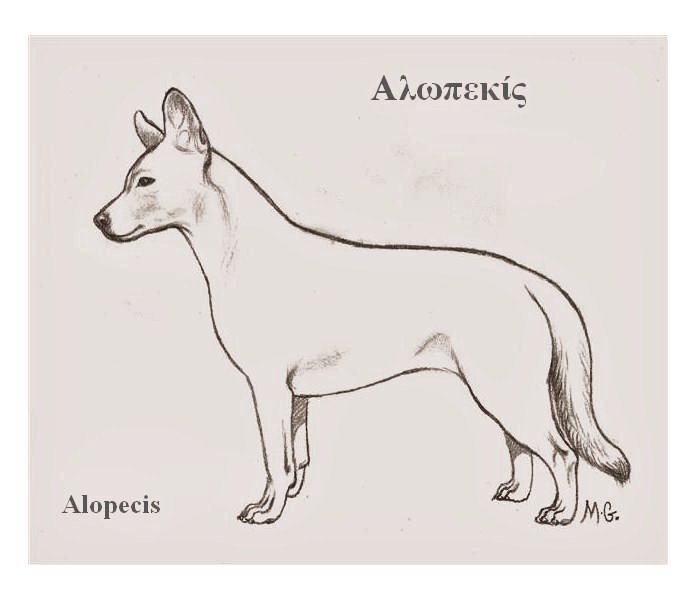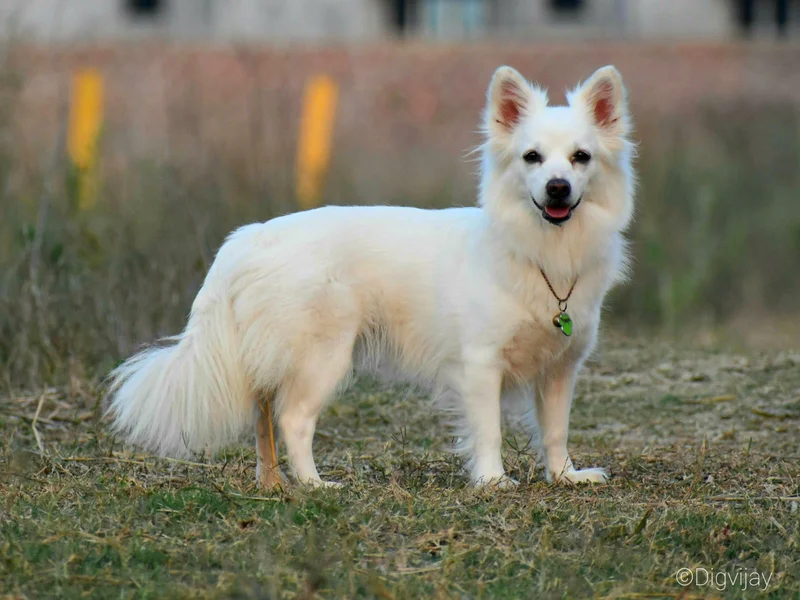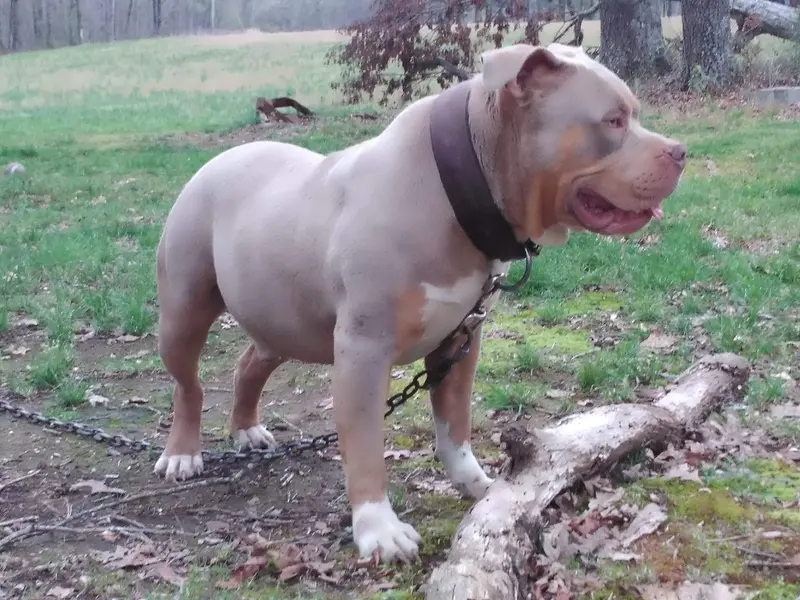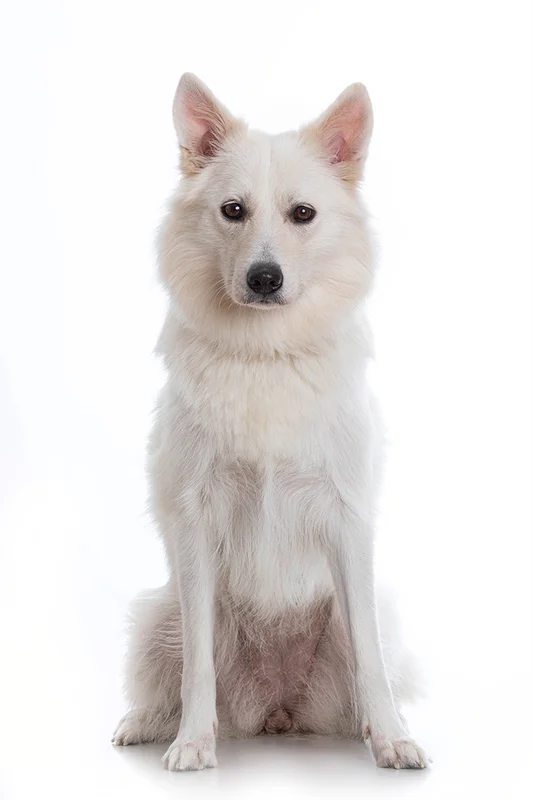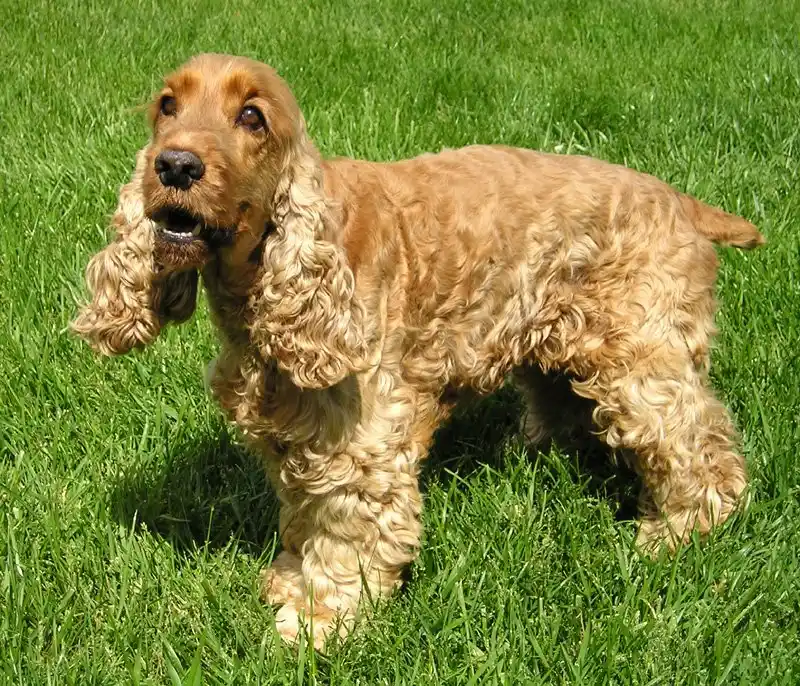Volpino Italiano
The Volpino Italiano is a small, energetic spitz-type dog known for its fox-like appearance and affectionate nature. Originally bred as a guard dog, this breed is now a beloved companion, requiring regular exercise and socialization.
Overview
🐕Breed Overview
✨Key Traits
💡What Makes Volpino Italiano Special
One of the standout traits of the Volpino Italiano is its strong loyalty to its family. They form deep bonds with their owners and are known to be protective, making them excellent companions.
Their playful and energetic demeanor means they require regular exercise and mental stimulation to stay happy. Volpinos are also quite vocal, often barking to communicate their feelings or alert their owners to potential threats.
Their adaptability allows them to thrive in various living situations, from apartments to larger homes, as long as their exercise and socialization needs are met. Overall, the Volpino Italiano is a delightful breed that brings joy and companionship to those lucky enough to share their lives with them.
The Volpino Italiano, often referred to as the Italian Fox Dog, is a charming and spirited breed with a rich history dating back thousands of years. Known for its fox-like appearance, this small spitz-type dog has captured the hearts of many, particularly in Italy, where it was once a favorite among royalty. With its curly tail, erect ears, and lively personality, the Volpino is not just a pretty face; it is also an intelligent and affectionate companion.
Historically, these dogs served as guard dogs, alerting larger breeds to potential intruders, but their loving nature has made them popular pets in modern households. The Volpino Italiano is characterized by its playful and energetic demeanor, making it an excellent family dog. They thrive on human interaction and require regular exercise to keep them happy and healthy.
Daily walks, playtime, and mental stimulation through training or games are essential for this breed. Despite their small size, Volpinos are known for their alertness and can be effective watchdogs, often barking to alert their owners of any unusual activity. In terms of grooming, the Volpino Italiano has a double coat that requires regular brushing to prevent matting and to manage shedding.
Their health is generally good, but potential owners should be aware of specific genetic issues, such as primary lens luxation, which can affect their eyesight. With proper care, training, and socialization, the Volpino Italiano can be a delightful addition to any family, bringing joy and companionship to their owners. Overall, the Volpino Italiano is a unique breed that combines beauty, intelligence, and a loving temperament, making it a wonderful choice for those seeking an active and affectionate canine companion.
🎉Fun Facts
Despite their small size, Volpinos have a strong guarding instinct and will bark to alert their owners of any intruders.
The Volpino Italiano is often mistaken for a Pomeranian due to its similar appearance, but it has a much older lineage.
This breed was a favorite among Italian nobility and often depicted in art and literature.
Breed Characteristics
Family & Friends
Good Behavior
Get Up & Go
Household Harmony
Temperament & Personality
✨Key Traits
🐕Core Temperament
The Volpino Italiano is characterized by its friendly and affectionate temperament. They are known to be good with children and can get along well with other pets, especially if socialized from a young age.
Their alertness and protective instincts make them excellent watchdogs, but they are not aggressive. Volpinos thrive on companionship and do not like to be left alone for long periods.
Their playful nature means they enjoy interactive play and mental challenges, making them a great fit for active families. Overall, their temperament is a blend of loyalty, playfulness, and intelligence, making them a wonderful addition to any household.
💫Personality Profile
The Volpino Italiano is known for its lively and affectionate personality. They are highly social dogs that thrive on human interaction and companionship.
Their playful nature makes them great family pets, as they enjoy engaging in games and activities with children. Volpinos are also alert and make excellent watchdogs, often barking to alert their owners of any unusual activity.
While they can be somewhat reserved around strangers, they warm up quickly once they feel comfortable. Their intelligence and eagerness to please make them relatively easy to train, although they may exhibit a stubborn streak if not properly motivated.
🔊Vocal Tendencies
The Volpino Italiano is known for its vocal nature. They tend to bark frequently, especially when they perceive a threat or notice something unusual in their environment.
This breed uses barking as a form of communication, whether to alert their owners or express excitement during play. While their barking can be a useful trait for alerting owners, it may also require training to manage excessive vocalization, particularly in apartment settings.
Overall, their vocal tendencies are a part of their charming personality, but owners should be prepared for a dog that enjoys expressing itself.
Affection & Social Traits
Energy & Activity
Communication Style
Care Requirements
🏃♂️Exercise Requirements
Daily Exercise
The Volpino Italiano is an active breed that requires regular exercise to maintain its physical and mental well-being. Ideally, owners should provide at least 60 minutes of exercise daily, which can be broken down into multiple sessions.
Activities such as brisk walks, playtime in a secure yard, and engaging in dog sports like agility can help meet their exercise needs. Puppies may require shorter, more frequent play sessions, while senior dogs may benefit from gentler activities to accommodate their energy levels.
Regular exercise not only helps manage their weight but also reduces the risk of behavioral issues stemming from boredom or pent-up energy. Insufficient exercise can lead to destructive behaviors, anxiety, and obesity, making it crucial for owners to prioritize their Volpino's activity needs.
Preferred Activities
🏠Living & Adaptability
Space Requirements
The Volpino Italiano is adaptable to various living environments, including apartments and homes with small yards. However, they thrive best in spaces where they can engage in regular outdoor activities.
For apartment dwellers, it's essential to ensure daily walks and playtime in nearby parks to meet their exercise and socialization needs. Their small size allows them to comfortably live in smaller spaces, but they do require mental stimulation and interaction to prevent boredom.
Owners should be mindful of their need for companionship and avoid long periods of isolation, which can lead to anxiety or destructive behavior.
Climate Preference
🍲Feeding Guide
Schedule
Food Types
Portion Size
Special Nutritional Needs
The Volpino Italiano benefits from a balanced diet rich in protein and healthy fats to support their active lifestyle. Owners should be cautious of food sensitivities and adjust their diet accordingly. Regular veterinary check-ups can help identify any specific dietary needs or allergies.
✨Grooming Requirements
Grooming Overview
The Volpino Italiano has a double coat that requires regular grooming to keep it healthy and free from mats. Owners should brush their Volpino at least once a week, using a slicker brush to remove loose hair and prevent tangles.
Bathing should be done as needed, typically every few months, to maintain coat cleanliness. Regular nail trimming and ear cleaning are also essential to ensure overall hygiene.
Special attention should be given to the areas around the eyes and mouth, as these can accumulate debris and moisture, leading to potential health issues.
Care Schedule
Brush weekly, bathe every 2-3 months, trim nails every 2-4 weeks.
Health Profile
⚕️Health Care
Regular health care is vital for the longevity of the Volpino Italiano. Routine veterinary check-ups, vaccinations, and preventive treatments for parasites are essential.
Early detection of health issues can significantly improve outcomes, so owners should be proactive in monitoring their dog's health. Additionally, maintaining a healthy diet and providing regular exercise can help prevent obesity and related health problems, contributing to a longer, healthier life.
Health Issues Overview
⏳Average Lifespan
Genetic Factors
Genetics play a significant role in the lifespan of the Volpino Italiano. While they are generally healthy, certain hereditary conditions, such as primary lens luxation, can impact their quality of life.
Responsible breeding practices that focus on genetic diversity and health testing can help mitigate these risks. Potential owners should seek reputable breeders who prioritize health and genetic screening to ensure they are adopting a healthy puppy.
Living Conditions
The Volpino Italiano thrives in environments that provide ample opportunities for exercise and social interaction. Living in a home with access to a secure yard is ideal, as it allows them to engage in play and explore safely.
Urban settings can also be suitable, provided they receive regular walks and mental stimulation. Social interactions with people and other pets are crucial for their emotional well-being, and a lack of these can lead to anxiety and behavioral issues.
Owners should ensure their Volpino has a balanced lifestyle that includes both physical activity and social engagement to promote longevity and happiness.
🏥Common Health Issues
Primary Lens Luxation (PLL)
Warning Signs
🔬Diagnosis
Veterinarians typically diagnose PLL through a thorough eye examination, assessing the position of the lens and measuring intraocular pressure.
💊Treatment
Surgical removal of the lens may be necessary, but this can be costly and not always feasible.
📝Management Tips
Regular veterinary check-ups are essential for early detection. If diagnosed, surgical options may be considered, but owners should be prepared for the possibility of euthanasia if the condition is severe.
🛡️Preventive Care
🔬Primary Lens Luxation Genetic Test
This test assesses the genetic predisposition for primary lens luxation, allowing breeders to make informed decisions about breeding pairs.
📅 Every breeding pair should be tested prior to mating.
Training
🧠Intelligence & Trainability
💪Work Drive
The Volpino Italiano thrives on mental stimulation and enjoys having tasks to perform. Activities that challenge their intelligence, such as puzzle toys or obedience training, can help keep them engaged.
Their historical role as a guard dog means they are naturally alert and responsive, making them suitable for various tasks. Owners should provide opportunities for their Volpino to use their instincts and skills, ensuring they remain mentally and physically stimulated.
⚠️Training Considerations
The Volpino Italiano is generally intelligent and eager to please, but they can exhibit stubbornness if not properly motivated. Common training challenges may include their tendency to bark, especially if they feel their territory is threatened.
To overcome these challenges, consistent training methods that incorporate positive reinforcement are recommended. Early socialization is crucial to help them adapt to various environments and reduce any potential anxiety or fearfulness around strangers or new situations.
Owners should be patient and persistent, using engaging training techniques to keep their Volpino focused and motivated.
📝Training Tips
Training a Volpino Italiano can be a rewarding experience, as they are intelligent and responsive to commands. Positive reinforcement methods, such as treats and praise, work best for this breed.
Start training early, focusing on basic commands and socialization with other dogs and people. Incorporating fun activities, like agility or obedience training, can keep them engaged.
Consistency is key; short, frequent training sessions are more effective than long, infrequent ones. Owners should also be aware of their Volpino's playful nature and incorporate play into training to maintain their interest.
History & Heritage
📜Origin Story
The Volpino Italiano's origin is steeped in history, with evidence suggesting that spitz-type dogs were present in Italy and other parts of Europe thousands of years ago. These dogs were not only companions but also served practical purposes, such as guarding property and alerting larger dogs to intruders.
The breed gained popularity among Italian nobility, who appreciated its charming demeanor and loyalty. However, the Volpino's numbers dwindled over the years, leading to a near extinction by the 1960s.
A revival effort in the 1980s focused on breeding from the remaining dogs, ensuring the preservation of this unique breed. Today, the Volpino Italiano is celebrated for its historical significance and remains a cherished companion in Italy and beyond.
⏳Development History
The Volpino Italiano is believed to have ancient roots, tracing back to spitz-type dogs found in Europe as early as 4000 BC. These dogs were known for their curly tails and fox-like appearance.
Over the centuries, the breed has evolved, maintaining its distinctive features while adapting to various roles, including that of a guard dog and companion. Despite its decline in popularity in the mid-20th century, efforts to revive the breed have been made, focusing on preserving its unique characteristics and temperament.
Today, the Volpino Italiano remains a rare breed, cherished for its historical significance and affectionate nature.
🛡️Purpose & Historical Role
Originally bred as a guard dog, the Volpino Italiano's role has evolved over time. While it was once tasked with alerting larger dogs to intruders, its affectionate nature and intelligence have made it a popular pet.
The breed's ability to serve as a watchdog while also being a loving companion has solidified its place in Italian households. Today, the Volpino is recognized for its versatility, capable of performing tasks as a guard dog or simply providing companionship.
🏺Cultural Significance
The Volpino Italiano has a rich history intertwined with Italian royalty and culture. This breed was favored by noble families and often depicted in art and literature, symbolizing loyalty and companionship.
Its presence in ancient engravings and artifacts highlights its long-standing relationship with humans, particularly in Italy. The breed's charm and affectionate nature have made it a beloved companion, and its rarity today adds to its allure as a unique cultural treasure.
Conservation Status
This breed is endangered with low population numbers globally.
